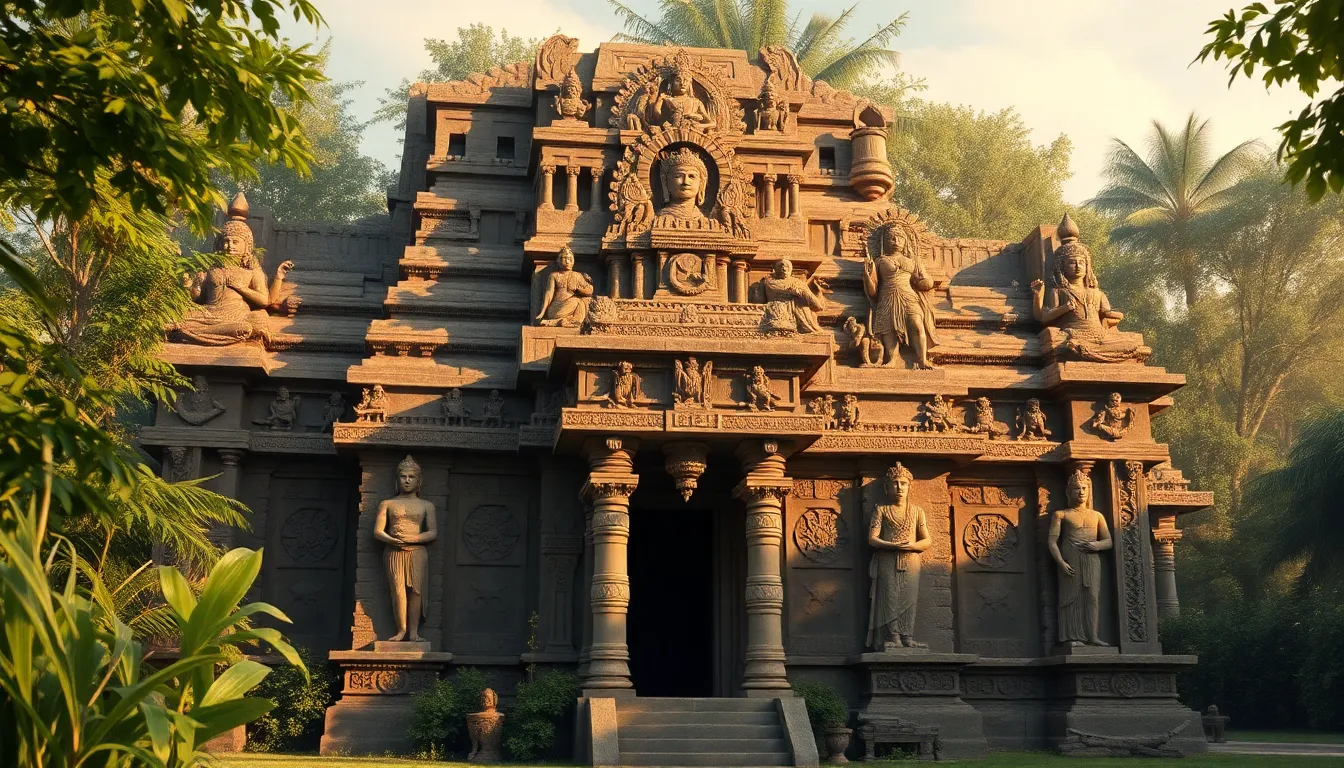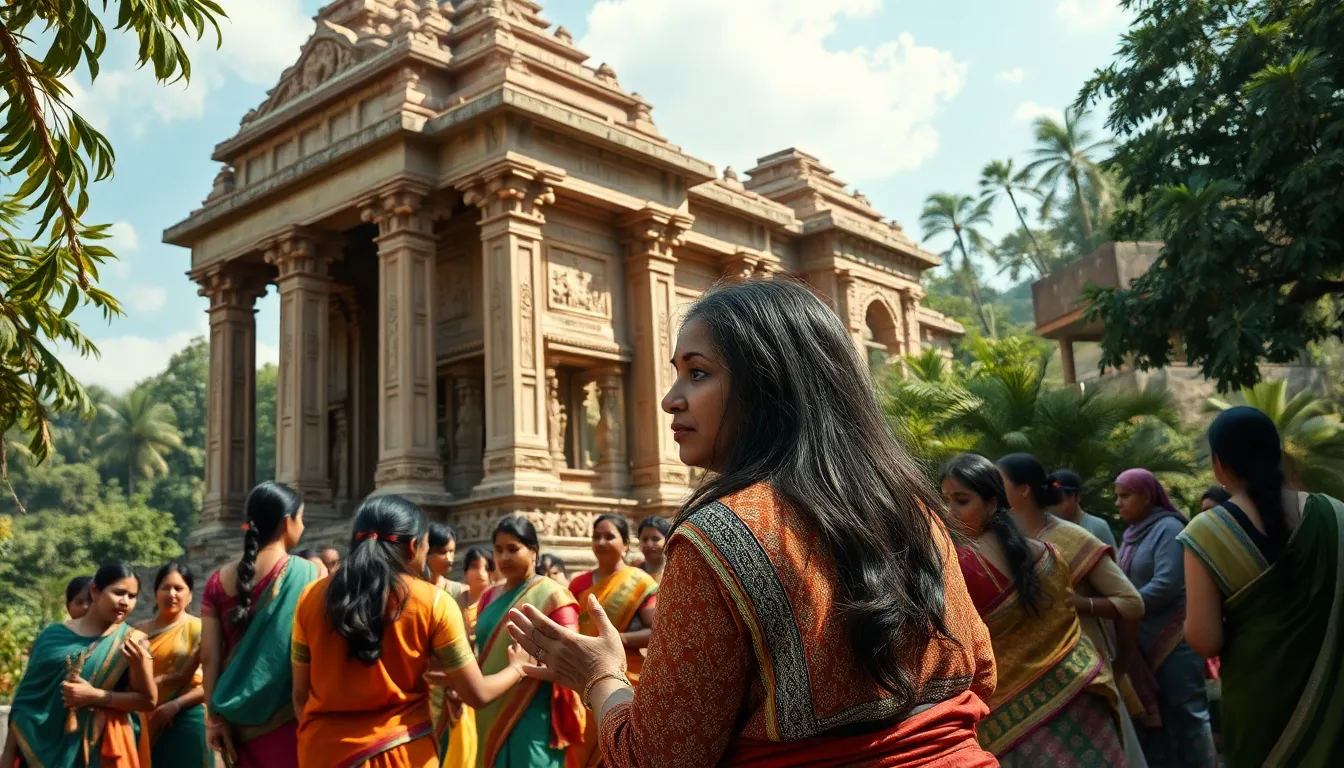Throughout human history, religion has played a vital role in shaping cultures and societies. As civilizations evolved, so did their spiritual beliefs, leading to a rich tapestry of faiths across the globe. But among these myriad religions, one question often arises: which is the oldest?
Exploring the roots of ancient religions reveals fascinating insights into humanity’s quest for meaning and connection. From the rituals of early hunter-gatherers to the structured belief systems of ancient civilizations, the search for the oldest religion uncovers not just a timeline but also the fundamental values and principles that have guided human existence for millennia. Understanding this history offers a glimpse into the very foundations of spirituality and the enduring nature of faith.
Table of Contents
ToggleOverview of Ancient Religions
Ancient religions formed the foundation of human spirituality and societal structures. Evidence shows that these belief systems emerged as early as 35,000 BCE, with practices often based on animism, shamanism, and ancestor worship.
Major Ancient Religions
- Sumerian Religion: The Sumerians, one of the earliest cultures in Mesopotamia, worshipped a pantheon of gods with specific domains, such as Anu for the sky and Enlil for wind.
- Egyptian Religion: Ancient Egyptians recognized divine forces in nature, venerating gods such as Ra, the sun god, and Osiris, the god of the afterlife. They emphasized rituals to honor these deities and ensure a favorable afterlife.
- Indus Valley Religion: Archaeological findings in the Indus Valley suggest a belief system centered around fertility and nature, featuring proto-Shiva figures in seals.
- Hinduism: Hinduism, emerging from the Vedic traditions around 1500 BCE, comprises complex rituals, philosophies, and a vast array of deities.
- Zoroastrianism: Founded by the prophet Zoroaster in ancient Persia, this monotheistic faith introduced concepts of good and evil, influencing later religions.
Key Characteristics
- Rituals: Early religions utilized rituals for various purposes, such as ensuring good harvests or appeasing deities. Participation in these ceremonies was essential for community cohesion.
- Sacred Texts: Many ancient religions produced texts, such as the Vedas in Hinduism and the Pyramid Texts in Egyptian religion, encapsulating beliefs and practices.
- Mythology: Myths provided explanations for natural events and human behavior, often featuring gods and goddesses embodying essential life forces and moral dilemmas.
Evolution and Influence
Ancient religions greatly impacted the development of later belief systems. Shared themes such as creation myths and moral teachings often echoed in subsequent religions. The transition from polytheism to monotheism reflects humanity’s evolving understanding of spirituality.
The study of ancient religions reveals humanity’s quest for meaning and connection to the divine, shaping civilizations and influencing cultural values across the globe.
Major Ancient Religions

Ancient religions significantly shaped human history, influencing cultures and societal norms. The following outlines key ancient belief systems, each with unique characteristics and lasting impacts.
Hinduism
Hinduism traces its roots back over 4,000 years and remains one of the oldest religions still practiced today. Characterized by a pantheon of deities, including Brahma, Vishnu, and Shiva, it encompasses diverse beliefs and practices. Core concepts include karma, dharma, and moksha, guiding followers on a spiritual journey. Sacred texts, such as the Vedas and Upanishads, provide philosophical foundations and rituals for worship. Temples and festivals play essential roles in community life, celebrating the intricate relationship between the divine and humanity.
Zoroastrianism
Zoroastrianism, founded by the prophet Zoroaster in ancient Persia around 3,500 years ago, emphasizes the duality of good and evil through the conflict between Ahura Mazda and Angra Mainyu. The religion’s sacred texts, known as the Avesta, outline ethical teachings and rituals aimed at promoting truth and righteousness. Fire, regarded as a symbol of purity, plays a central role in worship practices. Zoroastrianism’s influence extends to other religions, particularly in shaping concepts of heaven, hell, and the final judgment.
Ancient Egyptian Religion
Ancient Egyptian religion, flourishing from around 3,000 BCE, centered on a pantheon of gods and goddesses, including Ra, Osiris, and Isis. The belief in an afterlife led to elaborate burial practices, including mummification and the construction of monumental pyramids. Sacred texts, such as the Book of the Dead, offered guidance for the deceased on their journey through the afterlife. Temples served as centers of worship and community life, showcasing the intricate relationship between daily existence and divine favor. Rituals and festivals, deeply integrated into society, reinforced cultural values and strengthened communal ties.
Evidence of Early Beliefs
Archaeological evidence and historical texts provide crucial insights into early beliefs, shedding light on humanity’s spiritual practices.
Archaeological Findings
Significant archaeological findings confirm the existence of religious practices dating back tens of thousands of years. Excavations at sites like Göbekli Tepe in Turkey, established around 9,500 BCE, reveal monumental structures likely used for religious rituals. Similarly, discoveries in the Indus Valley showcase the presence of ritual baths and effigies, implying a form of worship. The burial sites of ancient civilizations, such as the Sumerians and Egyptians, contain artifacts like pottery, offerings, and grave goods, reinforcing the idea of an afterlife and the significance of religious beliefs. Such findings indicate a deep-rooted human inclination toward spirituality far predating organized religions.
Historical Texts
Ancient texts serve as critical evidence of early religious beliefs. The “Epic of Gilgamesh,” dated to around 2100 BCE, reflects Sumerian views on divinity and humanity’s quest for immortality. The Rigveda, a collection of hymns from the Vedic period of India, dates back over 3,000 years and outlines early Hindu beliefs and cosmology. The Pyramid Texts of Egypt, inscribed in 2400 BCE, highlight the afterlife and the relationship between pharaohs and gods. Such texts not only illustrate the complexity of early religious thought but also demonstrate how these beliefs were recorded and transmitted across generations, forming the basis of various established religions.
Cultural Impact of Ancient Religions
Ancient religions significantly influenced various aspects of contemporary life, shaping societal norms, legal systems, and cultural practices across civilizations.
Influence on Modern Religions
Ancient religions laid the groundwork for modern belief systems. Hinduism’s concepts of karma and dharma resonate in various spiritual practices today. Zoroastrianism introduced ideas of duality that later appeared in Christianity and Islam, influencing core theological principles. Egyptian mythology and rituals contributed narratives and practices seen in current Western religions. These lasting impacts illustrate the interconnection among belief systems and highlight the continuity of spiritual thought through history.
Role in Society and Culture
Ancient religions served critical roles in shaping societal structures and cultural identities. They provided frameworks for moral conduct, legal codes, and community rituals. Through festivals, people fostered social cohesion while reinforcing shared values. Sacred texts from these religions not only encapsulated spiritual beliefs but also conveyed cultural heritage, influencing art, literature, and philosophy. The architectural wonders of ancient temples and monuments reflected the priorities and beliefs of these societies, demonstrating how religion intertwined with daily life and cultural expression.
Ancient religions serve as a testament to humanity’s enduring quest for meaning and connection. They shaped cultures and societies by providing frameworks for moral conduct and community cohesion. The rich tapestry of beliefs and rituals from these early faiths continues to influence modern spirituality and cultural practices.
The exploration of these ancient systems reveals not only the evolution of religious thought but also the shared themes that resonate through time. As societies progress, the legacy of these foundational beliefs remains evident in contemporary values and traditions, underscoring the profound impact of ancient religions on the human experience.



